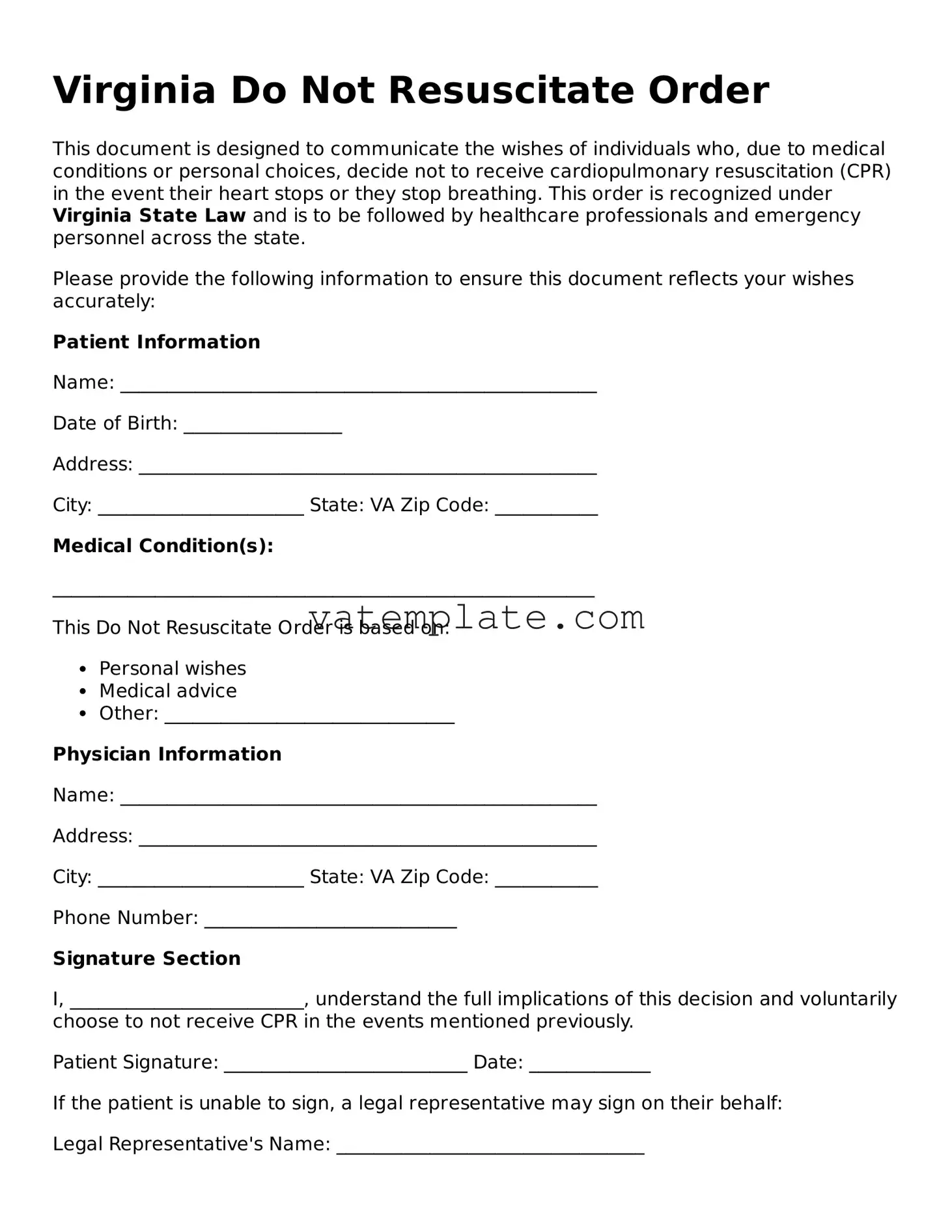Attorney-Approved Do Not Resuscitate Order Template for Virginia
The Virginia Do Not Resuscitate Order form is a legal document indicating a person's wish not to receive cardiopulmonary resuscitation (CPR) in the event that their breathing stops or their heart ceases beating. This form, part of broader advanced care planning, represents a critical choice for individuals aiming to control their medical care at the end of life. To make this important decision documented and official, individuals are encouraged to fill out the form by clicking the button below.
Modify Document Online
